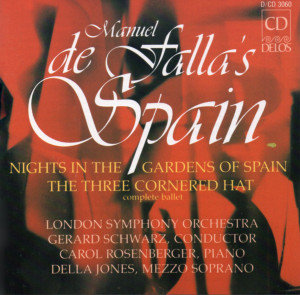Look around you. You can’t get away from it. It insinuates itself everywhere. It’s a giant force that molds modern life. It dominates our senses, buttresses the internet. It brings us entertainment and news. It tells us about the hottest and latest things and events. How could we live without it?
Billions of dollars are poured into it. The media is addicted to it. Television, radio, magazines would be nearly nonexistent without it. It partially supports even public services such as transit, concert halls, stadiums, museums, parks, and more. It even helps keep the cost down for commercial services of many types. Where would our economy be without it?
There’s no doubt about it, the economy is built upon advertising, and more than ever, advertising drives the economy, right along side debt. What would happen if advertising came to a halt?
We might first notice a sudden collapse of TV programming. Most radio stations would stop transmission. Magazines would go out of business. The internet wouldn’t be free anymore. Anti-social media would fade to black. OMG! Can you imagine? Billions of dollars would stop circulating. Ad agencies would go bankrupt. The US mail would carry a fraction of the its current load. Printing services, paper companies, billboard owners, the list goes on and on, would shrink or disintegrate.
After the initial shock, there’d be a flush of money, which used to be spent on advertising, that’s now free for other uses. Profit margins would increase substantially. Corporations would have more money for research, payroll, employee benefits, and dividends. Or they could cut prices. Some companies spend 10% or more of gross revenue on advertising. Do the math. If Corporation X has a 10% net profit and spends 10% on advertising, the elimination of all advertising expense would double their net profit. That’s big. That’s a windfall. Think of the bonuses. Think of the dividends. Think of the sales.
Oh, but wait. Without advertising they’d lose business, they’d lose market share. Commerce would come to a halt.
Well, maybe, probably not. Would you stop buying your favorite products? Would you stop using the services you need? Would you stop eating, driving, watching TV, shopping, . . ?
Now think about the cost of things currently supported by advertising. The price of a magazine subscription would soar. All that free TV programming would vanish or turn into pay-per-view. All the products and services subsidized by advertising would cost you more. But then remember all those products and services that used to spend millions on advertising would now cost less. It’s a trade-off. What you pay for soap currently has advertising expenses built-in to pay for your superficially free TV and radio, including the shows you don’t watch.
It’s been demonstrated that pay-per-view would actually cost you less. Why? Because you’d be paying only for what you watch. Via the advertising model you pay for everything, what you watch and what you don’t watch. Costlier for you, because it’s costlier for the advertiser. They advertise to pay for what you watch and what everyone else watches—highly inefficient on both ends.
Dig in deeper to advertising. Who does it benefit? Advertisers, particularly those with the deepest pockets that can afford to forge their message over airwaves, and print, and internet, are the only beneficiaries. The ones who can repeatedly blast messages to gain traction through the mere-exposure effect get the biggest returns. The consumer, on the other hand, gets nothing from advertising. Think about it. There is zero to gain. Upon further examination, you’ll find not only is there no personal benefit, there are incalculable costs. You are subjected to limited products and limits views of those products. Views that are intent on swaying you, often to buy something that is not in your own best interest, and just as likely harmful. Remember cigarette advertising?
Claims are made by advertisers, some that purport to be supported by science. More often than not, those claims turn out to be not merely a stretch, but totally fabricated. Advertising continually makes promises, overt and implied, that are neither kept, nor in most cases possible. The promise of happiness, the suggestion that you’ll get more sex, more friends, more respect, more money. The promise to save money, when in fact you’re spending money. Promises that their product is better than the next, tastier, faster, smarter, easier, and more and more. The promise that if you buy it, you’ll be smarter, faster, sexier, stronger, and more and more. The only way you’re going to be smarter and wealthier is to ignore advertising. Shut it out, shut it off—pay for ad-free apps, podcasts, news, and entertainment.
Advertising not only limits and misleads, it breaks up programming, disturbs your train of thought, and interrupts your attention span. It pollutes your vision. It distracts. It’s a blight on the landscape. It pops up unexpected and unwanted. It’s an annoyance for which most of us have become desensitized, nevertheless, it grates on us incessantly. And it’s getting more insidious. Product placement in TV and movies, banners and sidebars on webpages that move and flash to catch your eye, and spam and spam and spam and spam and spam.
When it’s scrutinized, advertising doesn’t look so innocent, nor good for the economy, nor good for us. It’s staring us in the face. There is an immense cost, economically and socially. Its worthlessness and its malign consequences are plainly visible. It benefits no one except those who use it to monopolize, manipulate, and dominate. It’s a free country. I want to be free. Free from advertising.
Read part 1 [Based on Science : the cost of ignorance]
Read part 2 [Falsehoods, Fabrications, Fictions : the cost of negligence]
Read part 3 [The Virtual Revolution : the cost of free]
Read part 4 [Topsy-Turvy : the cost of assumptions]
![[art]by[odo]](https://artbyodo.net/wordpress/wp-content/uploads/2011/03/cropped-Header.jpg)

